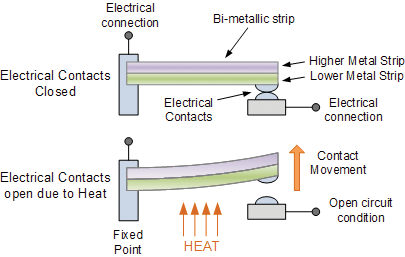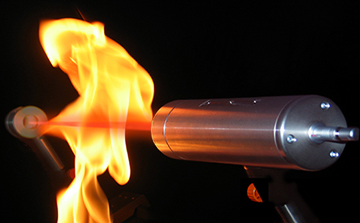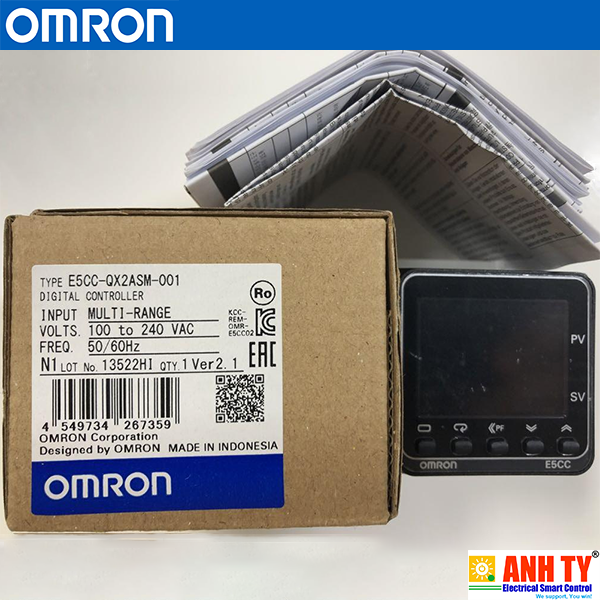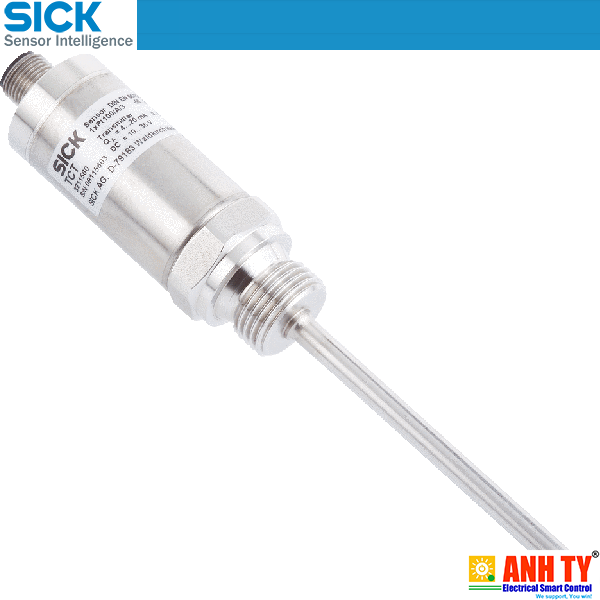Các loại khác nhau của cảm biến nhiệt độ được mô tả dưới đây. Nguyên tắc làm việc, ưu điểm, nhược điểm, hạn chế cùng với các ứng dụng của chúng được mô tả.
Giới thiệu
Cảm biến nhiệt độ là một thiết bị tập hợp dữ liệu liên quan đến nhiệt độ từ nguồn và chuyển đổi nó thành một dạng có thể được hiểu bởi người quan sát hoặc thiết bị khác. Nó đo nhiệt độ của môi trường. Các cảm biến được sử dụng cho các mục đích khác nhau từ sử dụng đơn giản tại nhà đến sử dụng khoa học cực kỳ chính xác và chính xác.
Ví dụ nổi tiếng nhất là nhiệt kế thủy ngân. Thủy ngân trong nhiệt kế mở rộng và hợp đồng về sự thay đổi nhiệt độ. Khi thay đổi âm lượng được định lượng, nhiệt độ được đo với độ chính xác hợp lý. Những cảm biến nhiệt độ này được sử dụng từ nhà đến phòng thí nghiệm của trường đại học để đo nhiệt độ.
Các cảm biến nhiệt độ phức tạp được vi tính hóa để có kết quả chính xác hơn. Các thiết bị này thường có hai dạng: cảm biến tiếp xúc và cảm biến không tiếp xúc.
Ngay cả con người và hầu hết các động vật đều có cảm biến nhiệt độ sinh học trong cơ thể hoạt động giống như chức năng nhân tạo. Nó thu thập dữ liệu và chuyển nó thành một hình thức dễ hiểu. Ví dụ: dây thần kinh cảm giác của con người gửi thông tin cảm giác từ da đến não dưới dạng xung điện.
Có bao nhiêu loại cảm biến nhiệt độ
Các loại: Cảm biến nhiệt độ đo lượng nhiệt sinh ra từ vật thể. Nó phát hiện những thay đổi của nhiệt độ là đầu ra của analog hoặc kỹ thuật số. Nhiệt độ bao gồm hai loại tính năng cơ bản:
Các loại cảm biến nhiệt độ tiếp xúc - Những loại cảm biến này là cần thiết để tiếp xúc với đối tượng hoặc hệ thống cần đo. Chúng có thể đo chất rắn, lỏng hoặc khí trong một phạm vi rộng.
Các loại cảm biến nhiệt độ không tiếp xúc - Những loại cảm biến nhiệt độ này sử dụng đối lưu và bức xạ để đo nhiệt độ. Chúng có thể đo trạng thái lỏng hoặc khí của vật thể phát ra năng lượng bức xạ dưới dạng bức xạ hồng ngoại.
Các loại khác nhau của cảm biến nhiệt độ được mô tả dưới đây. Nguyên tắc làm việc, ưu điểm, nhược điểm, hạn chế cùng với các ứng dụng của chúng được mô tả.
Bộ điều nhiệt

Working principle of bi-metallic Strip
Đây là một loại cảm biến nhiệt độ cơ điện, bao gồm hai loại kim loại khác nhau; ví dụ niken, đồng, vonfram hoặc nhôm. Chúng được liên kết với nhau để tạo ra một dải kim loại.
Khi điều này được kết nối với vật lạnh, hai kim loại được đóng lại với nhau và dòng điện đi qua bộ điều chỉnh nhiệt. Khi trời nóng, một kim loại sẽ nở ra nhiều hơn kim loại kia và dải kim loại liên kết uốn cong lên (hoặc xuống) mở các tiếp điểm ngăn dòng điện chạy qua.

Expansivity values for some metals in units of K*-1 X 0*-5
Có hai loại dải kim loại chính, thay đổi sự giãn nở của chúng theo sự thay đổi nhiệt độ của vật thể. Đây là những trò chơi hành động nhanh và khác Các kiểu hành động snap-hành động trực tiếp của NAG cung cấp hành động tức thời, BẬT / TẮT hoặc TẮT / BẬT trên các tiếp điểm điện ở một điểm nhiệt độ đã đặt, và các loại hành động leo trèo chậm chạp, thay đổi vị trí của chúng khi nhiệt độ thay đổi.
Bình giữ nhiệt kiểu Snap-action thường được sử dụng trong nhà của chúng tôi để kiểm soát điểm đặt nhiệt độ của lò nướng, bàn là, bể nước nóng ngâm và chúng có thể được tìm thấy trên tường để điều khiển hệ thống sưởi ấm trong nước. Nhưng nó có phạm vi trễ lớn trong việc mở và đóng hợp đồng điện. Ví dụ, bộ điều chỉnh nhiệt đặt ở 20 ° C danh nghĩa có thể mở ở 22 ° C và đóng lại ở 18 ° C. Điều này dẫn đến sự thay đổi nhiệt độ không mong muốn có thể vô hiệu hóa việc sử dụng bộ điều nhiệt. Đó là lý do tại sao bộ điều nhiệt bi-kim loại có bán trên thị trường có vít điều chỉnh nhiệt độ, nhờ đó có thể điều chỉnh nhiệt độ ở mức độ mong muốn và mức độ trễ đặt trước.
Các loại dây leo thường bao gồm một cuộn dây kim loại hoặc xoắn ốc, từ từ giãn ra hoặc cuộn lại khi nhiệt độ thay đổi. Vì, độ nhạy phụ thuộc vào độ dài của dải, loại cảm biến này cho phép độ nhạy cao hơn nhiều.
Ưu điểm
- Giá rẻ để mua
- Di động
- Dễ dàng để cài đặt
Nhược điểm
- Không cho kết quả chính xác
- Chậm phản ứng với sự thay đổi nhiệt độ
Cặp nhiệt điện Thermocouple

Cặp nhiệt điện là thiết bị đo nhiệt độ phổ biến nhất. Nó bao gồm hai kim loại khác nhau, được nối với nhau ở một đầu.
Nguyên tắc làm việc
Cặp nhiệt điện hoạt động trên cơ sở hiệu ứng Seebeck. Nếu hai dây dẫn của các vật liệu khác nhau được nối tại một điểm, EMF (lực điện động) được tạo ra giữa đầu mở phụ thuộc vào nhiệt độ của mối nối. Khi T1 tăng, V. EMF cũng phụ thuộc vào nhiệt độ của đầu mở T2. Ngã ba được đặt trong quá trình, đầu kia ở trong nước đá ở 0C. Điều này được gọi là ngã ba tham chiếu. Điện áp tỷ lệ thuận với nhiệt độ.
Các loại cặp nhiệt điện
 Ưu điểm
Ưu điểm
- Nó là đơn giản và chắc chắn trong xây dựng
- Nó có thể đo được phạm vi nhiệt độ rộng tới 2600 ° C
- Phản ứng nhanh
- Không tốn kém
- Hiệu chuẩn có thể được kiểm tra dễ dàng
Hạn chế
- Nó ít ổn định nhất và ít lặp lại nhất.
- Nó đòi hỏi bù nhiệt lạnh để đo nhiệt độ chính xác.
- Các đặc điểm nhiệt độ của câu thơ cảm ứng là không tuyến tính.
- Độ chính xác thấp nhất.
Ứng dụng
- Cặp nhiệt điện được sử dụng rộng rãi trong gia công thép, tuabin và động cơ diesel để đo nhiệt độ
- Nó được sử dụng trong các thiết bị nhiệt thức ăn gas như lò nướng và máy nước nóng.
- Nó được sử dụng trong sản xuất điện.
- Một cặp nhiệt điện có thể được sử dụng như một máy đo chân không trong phạm vi áp suất tuyệt đối khoảng 0,001 đến 1 torr
- Làm mát nhiệt điện
- Thiết bị y tế và thiết bị đóng gói
Đầu dò nhiệt độ
RTD là viết tắt của Máy đo nhiệt độ điện trở. RTD đôi khi được gọi chung là nhiệt kế điện trở. RTD là một cảm biến nhiệt độ đo nhiệt độ theo nguyên tắc điện trở của kim loại thay đổi theo nhiệt độ. Trong thực tế, một dòng điện nhỏ truyền qua một miếng kim loại có bạch kim, đồng hoặc niken (nguyên tố rtd hoặc chất phản xạ) trong khu vực cần đo nhiệt độ. Giá trị điện trở của các phần tử RTD sau đó được đo bằng một dụng cụ. Giá trị điện trở này sau đó tương quan với nhiệt độ. Chúng được sử dụng trong nhiều ứng dụng công nghiệp dưới 600 ° C, do độ chính xác và độ lặp lại cao hơn. Bạch kim là kim loại tốt nhất cho RTD vì nó tuân theo mối quan hệ nhiệt độ - điện trở rất tuyến tính và nó tuân theo mối quan hệ R vs T theo cách lặp lại cao trong phạm vi nhiệt độ rộng. Tính chất độc đáo của bạch kim làm cho nó trở thành vật liệu được lựa chọn cho các tiêu chuẩn nhiệt độ trong phạm vi từ -272,5 ° C đến 961,78 ° C và được sử dụng trong các cảm biến xác định Tiêu chuẩn Nhiệt độ Quốc tế. Bạch kim cũng được chọn vì tính trơ hóa học của nó
Nguyên tắc làm việc
RTD hoạt động dựa trên mối tương quan cơ bản giữa kim loại và nhiệt độ. Khi nhiệt độ của kim loại tăng, điện trở của kim loại đối với dòng điện tăng. Tương tự, khi nhiệt độ của phần tử điện trở RTD tăng, điện trở, được đo bằng ohms (Ω), sẽ tăng. Các yếu tố RTD thường được chỉ định theo điện trở của chúng trong ohms ở 0 độ C (0 ° C). Thông số RTD phổ biến nhất là 100, có nghĩa là ở 0 ° C, phần tử RTD phải thể hiện 100 resistance điện trở. Hoạt động RTD truyền thống nhất dựa trên mối quan hệ tuyến tính giữa điện trở và nhiệt độ, trong đó điện trở tăng theo nhiệt độ.
.png)
Signal Conditioning
Định luật Ohm: V = IR. Điều này có thể được sắp xếp lại thành I = V / R. Điều này nói rằng dòng điện (I) qua một mạch bằng điện áp trên mạch (V) chia cho điện trở trong mạch (R). Vì I tỷ lệ nghịch với R, nên với V cố định, dòng điện sẽ giảm khi điện trở tăng. Một trong những điều làm tăng điện trở là sự tăng chuyển động của các phân tử và electron tự do của một dây dẫn gây ra bởi sự gia nhiệt. Điều này là do sự va chạm ngẫu nhiên của chúng với các electron tạo thành dòng điện có xu hướng cản trở tiến trình tiến về phía trước của chúng. Vì vậy, sự thật là sự nóng lên của kim loại (yếu tố kháng) làm cho các electron tự do di chuyển nhanh hơn, nhưng theo các hướng ngẫu nhiên. Do đó, dòng điện tử ròng sẽ bị giảm do tần số va chạm ngẫu nhiên tăng lên. Từ hình dưới đây cho thấy khi một phần tử điện trở tiếp xúc với nhiệt độ cao hơn, nơi có dòng điện không đổi qua mạch, sự va chạm hoặc chuyển động của các electron tăng và cùng một cách điện trở cũng tăng nhưng dòng điện sẽ giảm ở phía cuối của phần tử điện trở. Sự thay đổi điện trở của kim loại khi có sự chênh lệch nhiệt độ ở các tình huống khác nhau được cảm nhận và đo.
Nhạy cảm
Sự thay đổi tương đối về điện trở (hệ số nhiệt độ của điện trở) chỉ thay đổi một chút so với phạm vi hữu ích của cảm biến. Mối quan hệ R vs T được định nghĩa là mức độ thay đổi điện trở của cảm biến trên mỗi mức độ thay đổi nhiệt độ. Sau đó, ước tính độ nhạy RTD có thể được ghi nhận từ các giá trị điển hình của sự thay đổi phân đoạn tuyến tính trong điện trở với nhiệt độ. Đối với bạch kim, con số này thường ở mức 0,004 / ° C và đối với niken, giá trị điển hình là 0,005 / ° C. Do đó, với bạch kim, chẳng hạn, chỉ cần thay đổi 0,4 W cho RTD 100 W nếu nhiệt độ thay đổi 1 ° C. Thông thường, một đặc điểm kỹ thuật sẽ cung cấp thông tin hiệu chuẩn dưới dạng biểu đồ điện trở so với nhiệt độ hoặc dưới dạng bảng các giá trị mà từ đó độ nhạy có thể được xác định. Tuy nhiên, đối với các vật liệu tương tự, con số này tương đối không đổi vì nó là hàm của điện trở suất.
English edition:
Introduction
A temperature sensor is a device that gathers data concerning the temperature from a source and converts it to a form that can be understood either by an observer or another device. It measures the temperature of a medium. The sensors are used for different purposes from the simple home use to extremely accurate and precise scientific use.
The best well known example is mercury-in-glass thermometer. The mercury in the thermometer expands and contracts on the change in temperature. As the volume change is quantified the temperature is measured with a fair degree of accuracy. These temperature sensor are used from home to the university labs for the temperature measurement.
The complex temperature sensors are computerized for getting more accurate results . These devices have typically two forms: contact sensors and non contact sensors.
Even human and most animals have biological temperature sensors in their body which works as the same function as the artificial does. It collects data and transfers it into a understandable form. For eg: human sensory nerves sends sensory information from the skin to the brain in the form of electrical impulses.
Types
Types: Temperature Sensors measure the amount of heat that produces from the object. It detects the changes of the temperature either as output of analog or digital. The temperature consists of two basic types of features:
Contact Temperature Sensor Types – These types of sensors are needed to be in contact with the object or system that is to be measured. They can measure solid, liquid or gas in a wide range.
Non-contact Temperature Sensor Types – These types of temperature sensor use convection and radiation to measure temperature. They can measure liquid or gaseous state of object that emits radiant energy in the form of infra-red radiation.
The different types of the temperature sensors are described below. The working principle, advantages, disadvantages, limitations along their applications are described.
Thermostat
This is a type electro-mechanical temperature sensor, which is consists of two different types of metal; for example nickel, copper, tungsten or aluminum. These are bonded together to make a bi-metallic strip.
When this is connected with cold object, the two metals are closed together and current passes through the thermostat. When it gets hot, one metal expands more than the other and the bonded bi-metallic strip bends up (or down) opening the contacts preventing the current from flowing.
There are two main types of bi-metallic strips, which change their expansion according to temperature changes of the object. These are “snap-action” and “creep-action”. The “snap-action” types give instantaneous action “ON/OFF” or “OFF/ON” on the electrical contacts at a set temperature point, and the slower “creep-action” types that gradually change their position as the temperature changes.
Snap-action type thermostats are commonly used in our homes for controlling the temperature set point of ovens, irons, immersion hot water tanks and they can be found on walls to control the domestic heating system. But it has large hysteresis range on the opening and closing of electrical contracts. For example, a thermostat set for a nominal 20°C might open at 22°C and close again at 18°C. This leads to undesirable temperature swings which can nullify the use of a thermostat.That’s why commercially available bi-metallic thermostats have temperature adjustment screws, by which it is possible to adjust the temperature at desired level and pre-set hysteresis level.
Creeper types generally consist of a bi-metallic coil or spiral that slowly unwinds or coils-up as the temperature changes. Since,sensitivity depends on the length of the strip, this type of sensor allows for much greater sensitivity.
Advantages:
Cheap to buy
Portable
Easy to install
Disadvantages:
Does not give accurate result
Slow to react to temperature changes
Thermocouple
Thermocouples are the most common temperature measuring device. It consists of two dissimilar metals, joined together at one end.
Working principle
Thermocouple works on the basis of Seebeck effect .If two conductors of different materials are joined at one point, an EMF (electromotive force) is created between the open end which is dependent upon the temperature of the junction. As T1 increases, so does V. The EMF also depends on the temperature of the open ends T2. The junction is placed in the process, the other end is in iced water at 0C. This is called the reference junction. The voltage is directly proportional to temperature.
Types of Thermocouple
Advantages
It is simple and rugged in construction
It can measure wide range of temperatures up to 2600°C
Fast Response
Inexpensive
Calibration can be checked easily
Limitations
It is least stable and least repeatable.
It requires cold junction compensation for accurate temperature measurement.
The emf induced verses temperature characteristics is non linear.
Lowest accuracy.
Application
Thermocouple is extensively used in steel processing, turbine and diesel engine for temperature measurement
It is used in gas feed heat appliances such as ovens and water heaters.
It is used in power production.
A thermocouple can be used as a vacuum gauge over the range of approximately 0.001 to 1 torr absolute pressure
Thermoelectric cooling
Medical equipment and Packaging equipment
Thermistor
A thermistor is type of resistor whose resistance varies significantly with the temperature. it is constructed of semi conductor material with a resistivity that is especially sensitive to temperature.
Working principle of Thermistor:
A thermistor is a type of resistor whose resistance varies significantly with temperature. Thermistors use internal electrodes that sense surrounding heat and measure it through electrical impulses. They also help to control heat to some extent, usually causing the device to which they are attached to heat up much more slowly than it normally would. The material used in thermistor is generally a ceramic or polymer. There are two kinds of thermistors: NTC (Negative Thermal Coefficient) and PTC (Positive Thermal Coefficient). With the former, the resistance of the thermistor decreases as the temperature increases, and with the latter, the resistance increases as the temperature rises.
The basic mathematical model used for thermistors is the Steinhart-Hart equation, discovered by oceanographers I.S. Steinhart and S.R. Hart. In its simplest form it is:
1/T = a + b(ln R) +c(ln R)3
where T = temperature, a,b and c = coefficients that are measured, R= resistance in Ohms.
Advantages:
1) They are cheap.
2) Stable
3) Accurate
4) long lasting
Disadvantages:
1) Non linearity.
2) Self heating
3) moisture failures.
Application:
1) Thermistors are used to regulate temperature in various household appliances. Most electronic appliances found in the home use both PTC and NTC thermistors.
2) Thermistors are installed on these appliances to control their temperatures. This prevents them from going beyond a set temperature range.
3) Modern appliances, communication tools and accessories like mobile phones, computers, LCD displays, CPUs, rechargeable batteries, and medical and patient monitoring equipment are all equipped with thermistors so they can be used continuously without fear of overheating and appliance damage.
Resistance Temperature Detector
RTD stands for Resistance Temperature Detector. RTDs are sometimes referred to generally as resistance thermometers. An RTD is a temperature sensor that measures temperature using the principle of the resistance of a metal changes with temperature.In practice a small electric current transmitted through a piece of a metal which are platinum ,copper or nickel(the rtd element or resisitor ) located in the area where temperature is to be measured.The resistance value of the RTD elements then measured by an instrument. This resistance value is then correlated to temperature.They are used in many industrial applications below 600 °C, due to higher accuracy and repeatability. Platinum is the best metal for RTDs because it follows a very linear resistance-temperature relationship and it follows the R vs T relationship in a highly repeatable manner over a wide temperature range.The unique properties of platinum make it the material of choice for temperature standards over the range of -272.5 °C to 961.78 °C, and is used in the sensors that define the International Temperature Standard. Platinum is chosen also because of its chemical inertness
Working principle
RTDs work on a basic correlation between metals and temperature. As the temperature of a metal increases, the metal's resistance to the flow of electricity increases. Similarly, as the temperature of the RTD resistance element increases, the electrical resistance, measured in ohms (Ω), increases. RTD elements are commonly specified according to their resistance in ohms at zero degrees Celsius (0° C). The most common RTD specification is 100 Ω, which means that at 0° C the RTD element should demonstrate 100 Ω of resistance.Most traditional RTD operation is based upon a linear relationship between resistance and temperature, where the resistance increases with temperature.
Ohm's Law: V=IR. This can be re-arranged to I=V/R. This states that the current (I) through a circuit is equal to the voltage across the circuit (V) divided by the resistance in the circuit (R). Since I is inversely proportional to R, then for a fixed V, the current will decrease as the resistance increases. One of the things which increases electrical resistance is the increased motion of the molecules and free electrons of a conductor caused by heating. This is due to their random collisions with the electrons making up the current which tends to interfere with their forward progress. So, it is true that heating of the metal(resistance element) causes the free electrons to move faster, but in random directions. As a result, the net electron current will be diminished due to the increased frequency of random collisions.From the figure below shows that when a resistance element come in contact to a higher temperature where there is a constant current flow through the circuit, the collision or movement of the electrons increases and the same way the electrical resistance also increase but the current will deceases at the end side of the resistance element.The change in electrical resistance of the metal when there is a temperature difference at different situation sensed and measured.
Sensitivity
The relative change in resistance (temperature coefficient of resistance) varies only slightly over the useful range of the sensor. The R vs T relationship is defined as the amount of resistance change of the sensor per degree of temperature change. Then estimate of RTD sensitivity can be noted from typical values of the linear fractional change in resistance with temperature. For platinum, this number is typically on the order of 0.004/°C, and for nickel a typical value is 0.005/°C. Thus, with platinum, for example, a change of only 0.4 W would be expected for a 100-W RTD if the temperature is changed by 1°C. Usually, a specification will provide calibration information either as a graph of resistance versus temperature or as a table of values from which the sensitivity can be determined. For the same materials, however, this number is relatively constant because it is a function of resistivity.
(Nguyễn Thảo Trường - http://DienElectric.com theo metropolia)








.png)
